One of the best ways to attract birds to your backyard is by setting up a bird feeder. However, it’s frustrating when birds aren’t interested in the food and feeders you put out. What gives?
If you’re experiencing this, there are several reasons why birds might not be coming to visit your feeder. In this article, I’m going to highlight six problems you can troubleshoot. I hope they’re a helpful checklist of actions you can explore.
These are a mix of problems I’ve experienced first hand during my years of bird feeding. Trust me, I’ve been there. I also pulled from top birding sources like the Cornell Bird Lab, Wild Birds Unlimited, and the Audubon Society for this article.
Bird feeding is a lot like engineering and chemistry to me, if things aren’t working, you can tinker and add in new ingredients or processes and hope for a better result. That’s part of what makes it so fun!
Disclaimer: A link found on this page is an Amazon affiliate link. If you click an affiliate link and make a purchase, I might earn a commission. As an Amazon Associate I earn from qualifying purchases.
1. You Haven’t Waited Long Enough
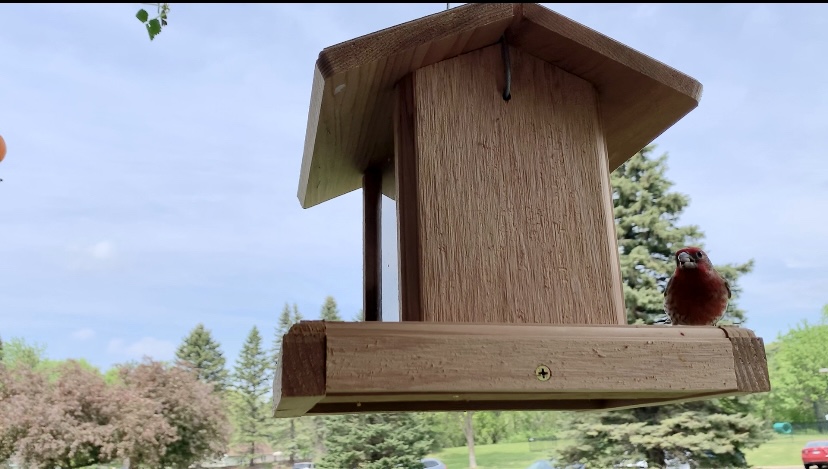
If you’re getting started with bird feeding, it can take a few days to a few months for birds to find your feeder (Wild Birds Unlimited). Remember to be patient.
When I first got started, it took House Finches more than two weeks to find my bird feeder. Don’t stress about anything else later in the story if you haven’t waited at least a couple weeks for birds to find your feeder.
You can increase the odds of birds finding your feeder by placing it in a visible location with shelter nearby. This helps birds feel safe when eating. Consider putting a feeder near brush, flowers, or trees in your yard to enhance that sense of security. Just be sure to keep a feeder at least 10 feet away from trees. This will prevent squirrels from jumping off of them onto the feeder.
Similar to old cartoons, you can also try sprinkling food on the ground near your feeder as a breadcrumbs approach. Draw them in with snacks!
Also, getting yourself a bird bath is a fantastic way to get more birds interested in dropping by. Not all birds frequent feeders. But they all need and appreciate water. This is a nice way to attract birds that don’t frequent feeders like American Robins and Cedar Waxwings.
Related Content: Five Heated Bird Baths that are Great for Winter
2. Your Bird Feeder Isn’t in a Great Location

I touched on this earlier, but birds might not be coming to your feeder because of where you put it.
If the feeder is too close to a high traffic area with a lot of people, not near any shelter, or too high up, birds won’t feel safe using it. Also, if the feeder is too exposed, birds will be vulnerable to predators.
The key is a balanced approach. Try placing your feeder in an open area, but not too far from trees or bushes where birds can take cover.
3. You Have a Dirty Bird Feeder
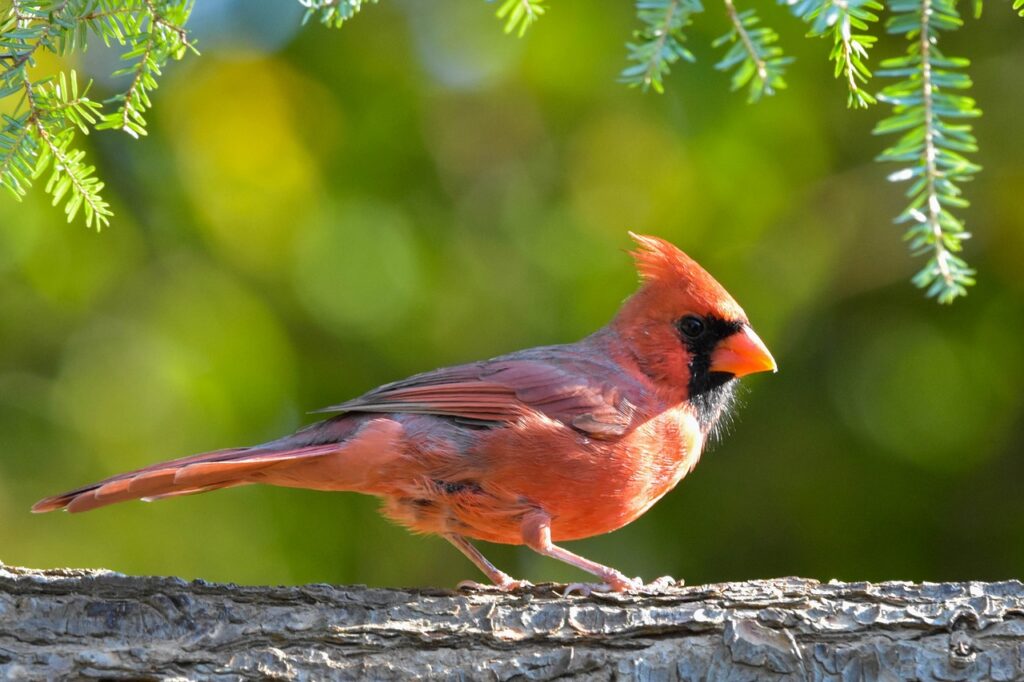
Birds might not come to your feeder because it’s dirty. You wouldn’t want to go eat dinner at your friends house if they served you a meal on a dirty plate, right?
A dirty feeder is a breeding ground for bacteria and mold. Be sure to clean your feeder every few weeks at minimum, and more frequently during warmer months when bacteria can grow quickly.
Here’s a crash course on how to properly clean a bird feeder:
- Rinse your feeder to remove seed residue and anything else.
- Use a mild soap and water to scrub and clean the feeder.
- Rinse it thoroughly to let it dry completely before refilling it with fresh food.
- Additionally, it’s a good idea to disinfect your feeder every few weeks with a diluted bleach solution (no more than one part bleach to nine parts water) to prevent the spread of disease.
4. You’re Not Putting Out Quality Bird Seed

Believe it or not, birds are picky eaters, and they like to have a variety of quality food options. If you’re offering cheap bird seed loaded with fillers (red milo, cracked corn, and oats are ingredients to watch out for), you’re reducing the odds of birds taking interest. If birds do show up, they’ll likely toss these ingredients on the ground.
Here’s a close up example of seed not to buy below. You can easily see the red milo and corn throughout.
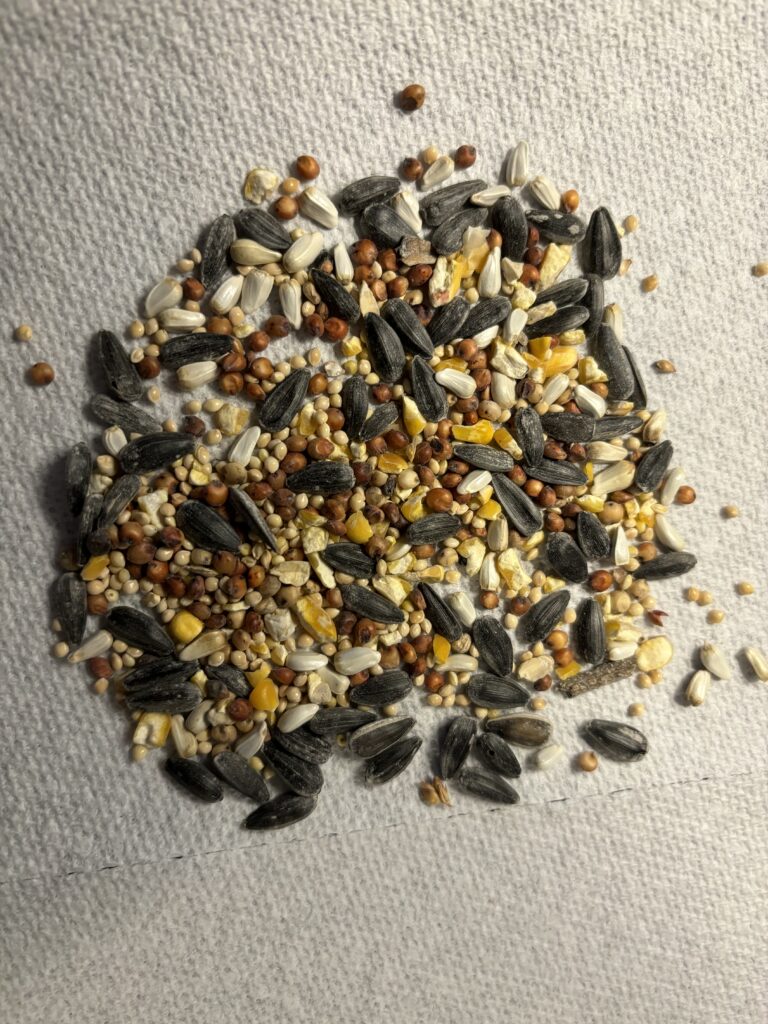
Here are the bird seed types I do recommend:
- You can’t go wrong with black oil sunflower seed. It draws in a ton of birds like Cardinals, Finches, Nuthatches, and Chickadees. It’s also relatively affordable.
- Safflower seed is also great for birds like Cardinals and Finches. Squirrels also tend not to like the taste.
- Suet is a must have, especially in the winter. It’s great for Woodpeckers, Chickadees, and Nuthatches.
- Peanuts are great for Blue Jays, Woodpeckers, Cardinals, and Nuthatches. Be sure to buy peanuts specifically for bird feeding to ensure they’re safe for birds.
- Thistle seed is fantastic for Goldfinches and House Finches.
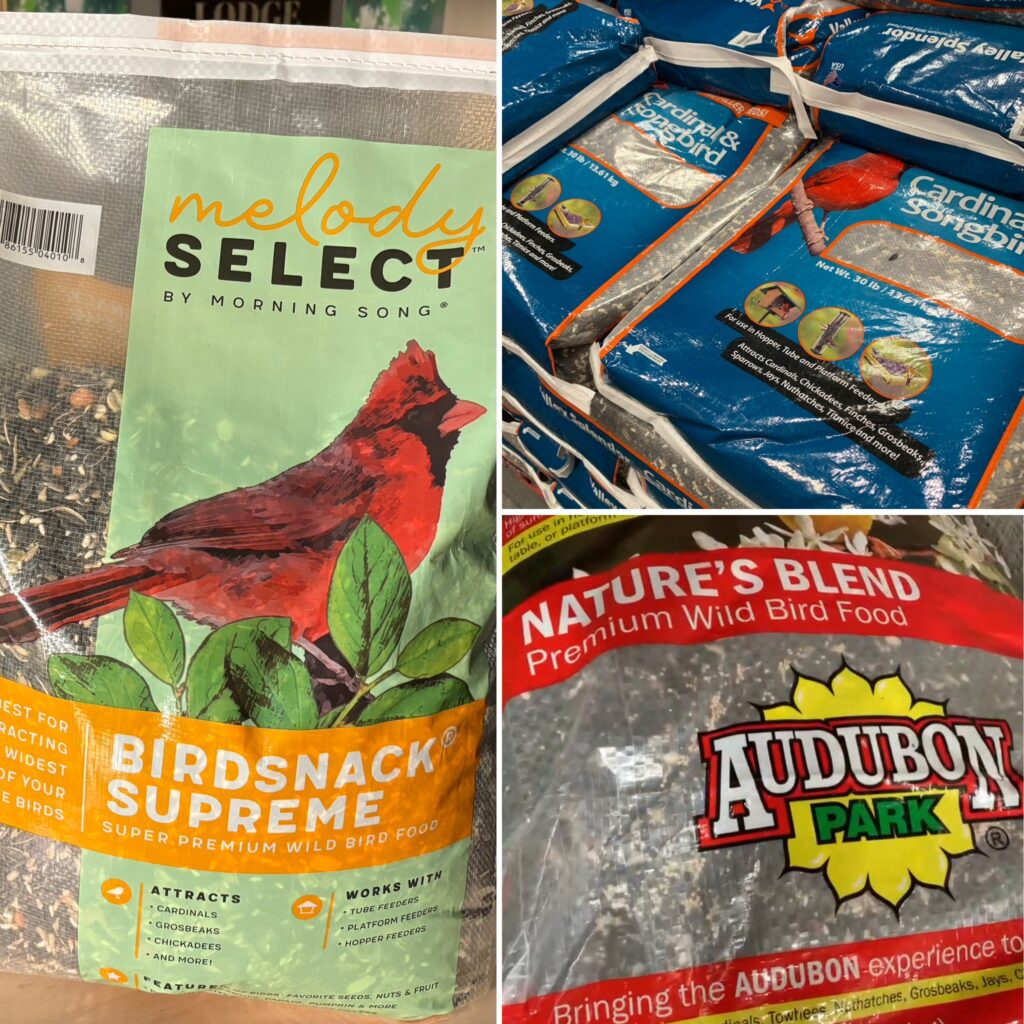
It’s like running a buffet. The more options you have, the more you’ll be able to please even the picky eaters out there.
You can read my full bird seed guide here for all the options and what food attracts which birds. By diversifying your bird feeder menu, you can attract a wider range of bird species to your backyard.
5. You Didn’t Keep Your Feeders Full
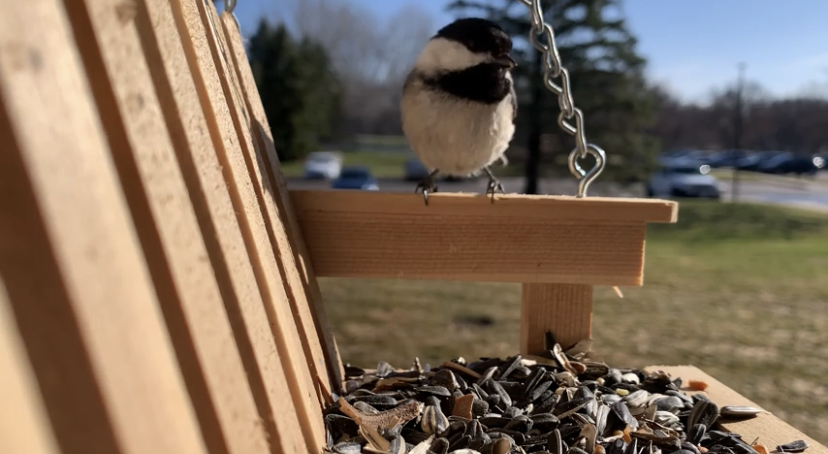
Birds are creatures of habit, just like you and I. If you have them visiting regularly but forget to fill your feeders for a few days, the birds will move on to other food sources in a hurry.
Keeping your feeders full goes a long way towards ensuring birds keep coming back to your yard. If you’re leaving town for a while, consider leaving a lot of food out for the birds in a weather-proof bird feeder. Or, have a friend fill your feeders up for you!
Want more tips on this? Here’s several ideas to keep your birds fed while you’re away
6. Natural Food Sources are Abundant
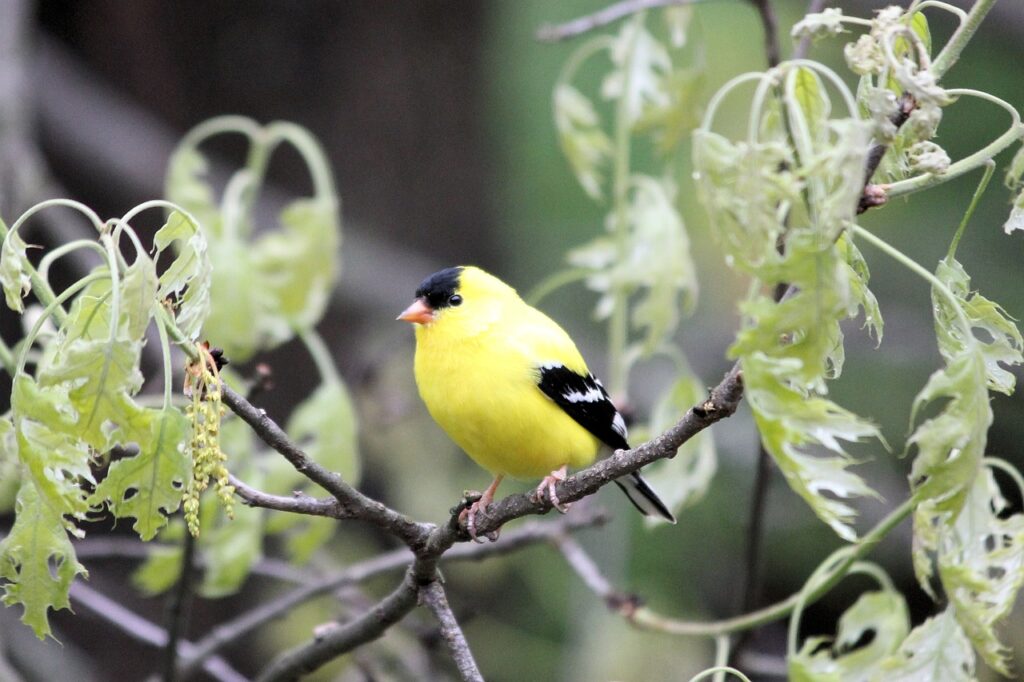
Every year, like clockwork, I get confused when fewer birds visit my feeders in the late-summer and into the fall. This is because natural food sources are plentiful and birds are prioritizing dining on them.
There isn’t much you can fix with this issue. Just take heart that you haven’t done anything wrong and that chances are good that your neighborhood birds will return in the future. Feeders are especially helpful in the other seasons, when natural food is sparse.
Wrapping Up
I hope this article helped you bring some birds to your feeders. When in doubt: Remember to be patient, as it takes time for the birds to discover a feeder. With a little effort and time, you will soon be rewarded with a backyard full of feathered friends.
I always welcome your questions and comments below or at debaundan@gmail.com
Thanks for reading!

Pingback:Why Won't Birds Come To My Feeder? Quick Fixes